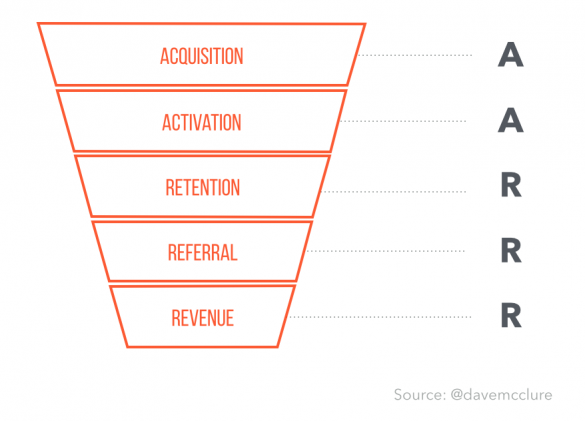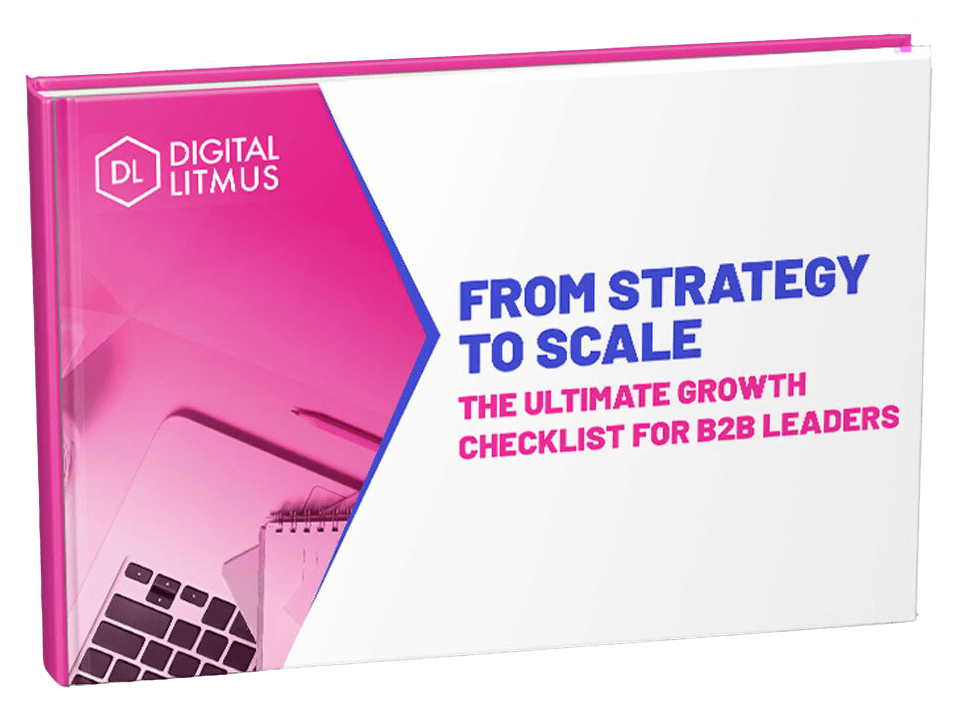“It’s all about the numbers” - that’s a phrase we’ve all heard a thousand times.
But I’d like to change it to be “It’s all about the right numbers”.
As we all know, numbers can deceive. Despite our best intentions we may be measuring the wrong thing, or measuring the right thing in the wrong way.
This can mean that our growth metrics aren’t telling us if we’re heading in the right direction or focusing on the right things.
That’s why it’s important to have a robust and reliable framework for growth metrics to guide your business and track your rate of growth.
In this article I’m going to introduce you to a simple but powerful framework for measuring growth. It’s perfect for startups, but it’s also powerful for bigger businesses looking to manage the growth of digital products.
Pirate Metrics
Recognising the need for startups to have a framework for growth metrics, the Silicon Valley VC-legend Dave McClure devised what is now known as Pirate Metrics For Startups.
Sounds a bit odd but it’ll make sense in a minute.
The framework is based around the fact that every business needs to get its customers through 5 key stages in a funnel:
- Acquisition
- Activation
- Retention
- Referral
- Revenue

Or to use the acronym - AARRR!
Hopefully the pirate bit makes a bit more sense now.
The beauty of the framework is its simplicity. Don’t be deceived; it may be simple, but it is powerful and flexible enough to adapt to your business and give you the tools you need to measure growth.
By using the framework as a guide, a growth team can direct attention to the best stage of the funnel to meet business goals. Focusing on a single stage of the funnel means that the growth team can find and pull the right levers to drive growth.
Let’s run through each stage of the growth funnel.
Acquisition
This is the first time a user comes into contact with your product. You’ve managed to attract the user and have their attention.
They may have arrived at your homepage or another landing page, and you now have the opportunity to shepherd them further into your product.
Acquisition is often misused as a vanity metric e.g., "we have X number of unique visitors every month". On its own this is a pretty useless number as it’s deceptively easy to drive the wrong traffic to your website.
It’s getting the right people to engage and convert that’s the difficult bit.
Acquisition is primarily related to marketing activity. It’s the initial pull of customers to your website. To fine tune acquisition you’ll need to be working through each of your marketing channels (inbound and outbound) to work out which are the most effective.
But be warned - marketers often judge a marketing channel to be effective if it acquires users cheaply and at scale. Of course, there’s more to the story - the users need to move through the funnel, which brings us on to the next stage.
Activation
Acquisition has brought a new user to your product and Activation is where a user actually starts to use your product.
With your current metrics, you’ll no doubt be seeing users come to your product, sign up, and then leave without having experienced the wonder and glory of what your product has to offer. Not ideal, we want users to activate.
Activation is a unique metric that you define for your product. To give you an example, Dropbox considers a user to be activated once they have put a single file, in a single folder, on a single device.
To define Activation, try to think what the ‘aha’ moment is for your product.
What measurable actions does a user have to take with your product before you can safely assume that they’ve used your product sufficiently to understand it. There’s no absolutes here and your definition of Activation may change over time.
Activation is very often a good starting place to focus optimisation efforts. If you’re driving lots of users to your product and they’re not activating - you’ve got a leaky bucket, and that needs to be fixed.
Don't settle for a cookie-cutter approach to B2B marketing. Let's develop a data-driven strategy that differentiates your brand and delivers results. Ready to embark on a journey towards business growth and success? Start by exploring our strategy services and how they can help you thrive.
Retention
So you’re getting new users to your product and they’re engaging enough to get to the ‘aha’ moment. What we really want now is for them to come back to your product soon and often.
Retention is another metric that is specific to your product. You need to define an event, or series of events, that you consider a user to have been ‘retained’.
An example could be signing in to your product once a day for three days, or perhaps once a week for three weeks.
It’s contextual and depends on what you anticipate to be the usage pattern for your product.
Referral
Referral is the holy grail. It’s how Facebook has gotten to where it is today.
Acquiring a user and then having them acquire another user through word of mouth is the best performing return on investment you’ll ever have. The referral channel generally has the highest conversion rates of all channels.
In terms of measurement, referral is pretty simple - how many new users does an existing user successfully refer. This is called the viral coefficient.
If one user successfully refers one other user, the viral coefficient is one. If the viral coefficient is above one, then you truly have a viral product on your hands.
A successful referral is key - sending an invitation to ten users is not enough. The referral is only successful if those users actually come to your product and register.
And if you have a SaaS product, you’ll want to be tracking which referrals are turning into paying customers to more accurately track the effectiveness of your referral mechanisms.
To get a user into the referral mindset, it means that not only do they like your product but they think it’s of sufficient value to their network that they’re going to share it.
There’s a lot of psychology at play here and by applying behavioural design and persuasion marketing techniques to your product you can increase referral rates.
A good place to start when thinking about improving referral is to look at how some of the big players have created referral mechanisms within their products.
The most famous is Dropbox. Other good points of reference are Facebook, Twitter, and Pinterest. Sign up to each service and see how they encourage you to refer at different stages of onboarding and usage.
Last, but certainly not least, let’s look at Revenue.
Revenue
Revenue is the last stage of the funnel. Accurately tracking revenue is the best way to avoid being seduced by other vanity metrics.
That said, users typically have to go through the entire funnel before they’ll convert. So tracking revenue is only the final piece of a bigger picture.
How you track revenue will be specific to your product. It’s good to have an overall conversion-to-paid rate so you can understand how many of your free plan or free trial users are converting to paying customers.
You’ll want to be able to dig deeper with more granular data too. If you have different plans you’ll want to be able to segment revenue by plan, and track things like monthly recurring revenue and customer lifetime value (LTV).
There’s scope for a lot of detail here and to do it justice we could do an entire post just about tracking revenue. It sounds obvious but the really important thing is to ensure that you are accurately tracking revenue in the funnel, in whichever form works best for your product.
Conclusion
So that’s the basics of each stage of the AARRR growth framework for startups. As you can see it’s simple but flexible enough to adapt to your business.
Stats overload is a common problem for web businesses which can be solved by building a growth dashboard based on the AARRR growth framework.
A growth dashboard is a great way to monitor your business growth and apply focus and rigour to all of your product and marketing efforts.

Are you a B2B company looking to accelerate growth?
Our connected sales, marketing, and HubSpot agency services might be just the ticket. Get in touch for your free growth assessment to find out how you can accelerate business growth today.





